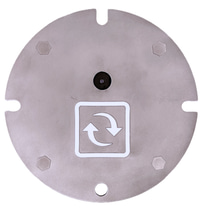SwitchMon™
NFPA 70B compliance through continuous monitoring
SwitchMon is InfraSensing's product line enabling to comply with NFPA 70B by performing continuous thermography, condition and evironment monitoring of equipnment in the gray space of mission critical infrastructure.
Our SwitchMon product line is optimized for monitoring switchgear, transformers and critical power.
The first phase is Continuous Thermography Monitoring (CTM) using SwitchMon's patented thermography sensors.
Continuous Condition Monitoring (CCM) checks non stop the conditions inside the critical power equipment.
Continuous Environment Monitoring (CEM) monitors the environment in which those critical power systems operate.
Learn more about our SwitchMon sensors
Our SwitchMon product line is optimized for monitoring switchgear, transformers and critical power.
The first phase is Continuous Thermography Monitoring (CTM) using SwitchMon's patented thermography sensors.
Continuous Condition Monitoring (CCM) checks non stop the conditions inside the critical power equipment.
Continuous Environment Monitoring (CEM) monitors the environment in which those critical power systems operate.
Learn more about our SwitchMon sensors


Continuous Thermography Monitoring (CTM)
24x7 monitoring by re-using existing IR windows

Mounting of SwitchMon thermography sensors onto IR windows for continuous thermography monitoring - eliminating downtime and re-certification
patented
Continuous thermal monitoring helps prevent equipment failures by automatically tracking the temperature of electrical components and spotting abnormal heat signatures that may signal underlying issues. Normally, these components operate within a specific temperature range. A deviation exceeding 10°C (18°F) between phases often indicates deeper problems, such as voltage imbalances, which can escalate into hazardous arc flashes.
InfraSensing’s SwitchMon addresses these risks by harnessing a patented method that mounts thermographic sensors onto existing IR windows—eliminating downtime and re-certification. This automation solves the pitfalls of periodic inspections, where issues arising after the last check can go undetected until the next one. With contactless, real-time detection, any irregularities trigger immediate corrective measures, ensuring minor problems don’t spiral into major failures.
By proactively identifying potential dangers, SwitchMon enhances the safety, reliability, and service life of vital electrical systems, delivering peace of mind and long-term value.
Learn more on Thermography sensors Learn more
InfraSensing’s SwitchMon addresses these risks by harnessing a patented method that mounts thermographic sensors onto existing IR windows—eliminating downtime and re-certification. This automation solves the pitfalls of periodic inspections, where issues arising after the last check can go undetected until the next one. With contactless, real-time detection, any irregularities trigger immediate corrective measures, ensuring minor problems don’t spiral into major failures.
By proactively identifying potential dangers, SwitchMon enhances the safety, reliability, and service life of vital electrical systems, delivering peace of mind and long-term value.
Learn more on Thermography sensors Learn more

Continunous Environment Monitoring (CEM)
Monitoring the environment, now mandated by NFPA 70B, is crucial for anyone operating switchgear. Water and electricity don’t mix, creating immediate hazards. Dust gradually threatens electrical equipment, while vibrations can loosen connectors, causing overheating and fire risks. Corrosion is particularly harmful to copper components. Our real-time corrosion sensor detects corrosion levels instantly.
For temperature, humidity, dust, and water ingress, our plug & play sensors provide comprehensive monitoring. Environmental failures, when undetected and unaddressed, lead to power equipment failure.
Continuous environmental monitoring ensures the reliability, safety, and longevity of electrical systems, preventing minor issues from escalating into major problems.
Learn more on our environment sensors Learn more
For temperature, humidity, dust, and water ingress, our plug & play sensors provide comprehensive monitoring. Environmental failures, when undetected and unaddressed, lead to power equipment failure.
Continuous environmental monitoring ensures the reliability, safety, and longevity of electrical systems, preventing minor issues from escalating into major problems.
Learn more on our environment sensors Learn more

Independently certified and tested
Our sensors have been safety tested by UL under the 61010 electrical safety standard. Our base units and hubs meet the UL 6238 standard.
Our sensors have undergone rigorous independent reliability testing by one of the world’s largest and most reputable switchgear and power manufacturers. Initially, our products successfully passed a comprehensive 10-year reliability test. Subsequently, they were subjected to and passed an even more stringent 15-year reliability test.
These independent evaluations underscore the long-term durability and dependability of our sensors, ensuring their exceptional performance in monitoring electrical equipment.
Our sensors have undergone rigorous independent reliability testing by one of the world’s largest and most reputable switchgear and power manufacturers. Initially, our products successfully passed a comprehensive 10-year reliability test. Subsequently, they were subjected to and passed an even more stringent 15-year reliability test.
These independent evaluations underscore the long-term durability and dependability of our sensors, ensuring their exceptional performance in monitoring electrical equipment.

NFPA 70B standard
NFPA 70B, now a standard, mandates both continuous thermal monitoring and operating environment monitoring for electrical equipment, including preventative maintenance and inspections. Continuous thermal monitoring with our thermography and IR spot sensors is superior to periodic inspections because it provides real-time detection of issues.
In periodic inspections, problems can arise the day after an inspection and remain unnoticed until the next one. Continuous monitoring detects faults immediately, preventing failures and hazards.
Operating environment monitoring, tracking factors like temperature, humidity, water ingress, dust, and corrosion, ensures optimal conditions and prevents equipment degradation.
This compliance enhances safety, reliability, and longevity of electrical systems.
In periodic inspections, problems can arise the day after an inspection and remain unnoticed until the next one. Continuous monitoring detects faults immediately, preventing failures and hazards.
Operating environment monitoring, tracking factors like temperature, humidity, water ingress, dust, and corrosion, ensures optimal conditions and prevents equipment degradation.
This compliance enhances safety, reliability, and longevity of electrical systems.










